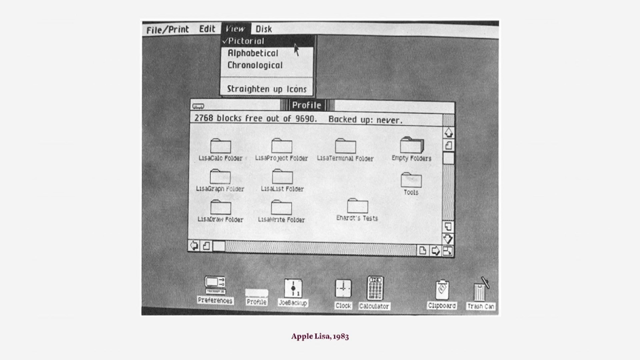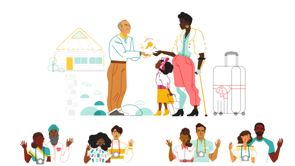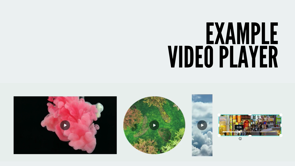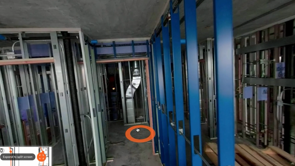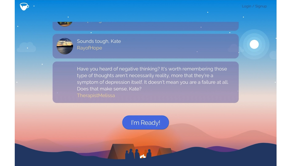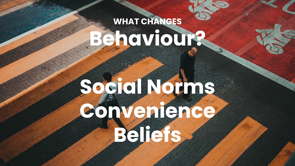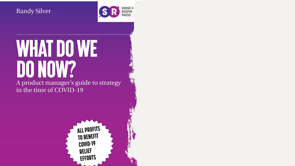Design Fiction and Space to Speculate
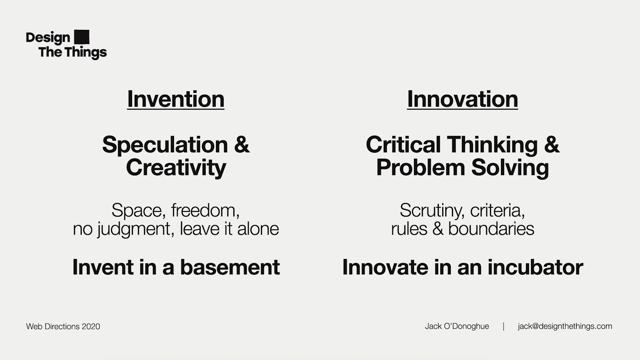
Jack O'Donoghue–Design Fiction and Space to Speculate
(upbeat music) - My name's Jack, I'm an experienced design lead and I like to find analogies from different areas of the creative industries and use them to shape my understanding of the work I do in product design as a leader and a practitioner. I do that by interviewing people with interesting ideas on my interview series design the things and another way I'm going to do it is through talks like this.
A while back, I had this tiny seed of an idea. It was abstract and difficult to articulate, but I knew that there was something there.
The challenge was taking something that I found inspiring and turning it into something relevant and useful for you guys to use in your day-to-day work.
I thought a lot about it, I wrote a lot of draughts and I spoke to other people in the industry that had related ideas.
At times I got lost and for that maybe there was nothing in it and other times I was excited and energised for having dug into something so deeply.
And then I realised that this talk is really about that process.
It's about wrestling with ideas and being brave enough to reach for something new, something that didn't exist before or something that other people aren't looking at, because that's how we pioneer and lead through talk. I might not have nailed it, but even if or you take from today is an opinion that opposes mine, then this talk will have been worth it.
It will have been worth it because you have challenged me and in doing so, you'll have formed a more thorough opinion about what's important to you, what you value and your way of working.
The idea is simple, by making space in your work to wonder about the future and to speculate, can help you innovate today.
We're encouraged to experiment and try new things, but do it fast and hit those KPIs.
We're encouraged to disrupt our industries, but do it using the same tech, constraints and resources as our competitors.
We're encouraged to be creative, but do this very specific task, don't miss those five stand-ups, planning sessions, feedback sessions, showcases, and one-on-ones. We're told think big in a room full of people who're judging you even though they say they aren't in front of your boss and next to a colleague that might be up against you for that promotion, bold innovations come from bold ideas, bold ideas come from both thoughts, both thoughts come from being bold enough to take the time and making the space to think freely.
What if we had the space to think freely to go down a few rabbit holes, hit a few dead ends and come back to reality with a deeper understanding of something new? And what if we didn't? Today, I hope to encourage you to loosen up the boundaries of the work you do and give yourself and your teams some space to speculate, because if you do what everyone else is doing, you'll get what everyone else gets.
Speculation is to engage in thoughts or reflection, to meditate on or ponder a subject, and to review something idly or casually and often in conclusively.
I've got a few examples for you to illustrate when and why speculation can be effective, and I'll share a basic formula and also a tip for balancing this approach of the demands that we all have to make sure it's effective in a corporate work environment.
Here's an example of a design challenge where speculation was really the only approach.
You'll see how it teased out big questions and by encouraging deliberate thought led to a new perspective on the challenge.
The challenge was, a nuclear waste site will be toxic for a hundred thousand years, how do we warn future humans or inhabitants of earth to stay away? Well, to find out, we could start by asking ourselves what important considerations are there? Remember, a hundred thousand years is 20 times further forward in time than ancient Egypt is to us in the past.
How do you communicate to an unknown civilization? What language would they speak? What signs would they recognise? What structures last that long, and where would you put the waste? Like what environment is stable enough to withstand ice ages and tectonic shifts that could arise during that time? The face of the earth may be completely reversed. Well, we can't know for sure what will happen or how it will communicate to these people, so we have to speculate.
What if we created a religious order to God, the knowledge and pass down instructions, warnings, and information that would keep people safe, a kind of nuclear priesthood? Well, we have plenty of stories from our religions and we've completely ignored them because we think they're made up by humans or we piously devote ourselves and start wars about the specifics of each interpretation. It's interesting to think about which of our myths and religions may have been designed for a similar role and were lost in translation along the way. Another idea is what if we bred a cat that glowed when it was near nuclear waste? Well, we have superstitions today about many things, black cats being one, but people lose belief when the connection isn't clear. I wonder what superstitions of ours stemmed from something real or were intended as metaphors. Another idea is what if we arranged the landscape to look ominous, scary, undesirable, and made people afraid to go there? Well, people seem intrigued by the unknown. It might become an attraction or an ancient wonder. So that one's no good.
So how has speculating about these ideas been useful? We learned that how we interpret information changes pretty drastically over time, wisdom can become superstition and we're drawn to the unknown.
We learned that we'd need to put the waste in a landscape that isn't likely to be effected by an ice age, or is unreachable by humans, and we'd likely need several ways of communicating the dangers of the site in case people did come into contact with it. So semiotics, language, architecture, it shouldn't be open to interpretation and we probably shouldn't leave it to humans to pass the knowledge on.
So we could judge these answers and find a good solution. There is one in there, but what's most interesting is the journey that we've just been on.
We identified the key variables and drivers of the design challenge, people, landscapes, communication, we extrapolated them into the future, into the unknown and speculated on possibilities and gained a new perspective on today.
This may seem a bit fluffy and sure there's a time and a place for it but it's different and different approaches get different results. It's fun, and we do our best work when we're having fun. It's risky, but bigger risks, you're bigger payoffs. Another example of speculation is the popular TV show Black Mirror, which many of you will have seen.
It's famous for depicting the moral dilemmas and impact on society and behaviour that technology may have in the future.
It's a great show, of course, they like to focus on the dark side of the future, but it's engaging because it feels like it could actually happen.
Often we can see the line and sequence of events that leads to these dystopian outcomes.
And that's what I think makes it so interesting. The show has a very simple formula.
Take one of the more interesting and relevant factors from the zeitgeist of today, extrapolate it out into the future, speculate on what possible outcomes could result from the continued progression of this thing and reflect on an explorer result.
This approach encourages you to focus on what's important now, it encourages you to think about what might be important in the future, what the consequences of the decisions you make today are, you can then channel this new perspective into your projects to come up with fresh ideas, maintain a strategic outlook, and to have a bird's eye view of the driving factors and consequences behind your product or service. Loss of the technology we have today was first depicted in science fiction.
There's so many examples of this, a few of them, driverless cars, virtual reality, AR, AI, wearable devices, the mobile phone, and the list goes on, and on, and on maybe one day hoverboards.
Science fiction seems to me the most extreme and creatively liberal form of speculation. It's a great medium to explore technologies and their impact on the world.
And it's also a lot of fun.
It's rumoured that Tim Berners-Lee, the creator of the World Wide Web was inspired by Arthur C. Clarke Saifai Book, Dial F for Frankenstein, where he describes, an evermore interconnected telephone network that spontaneously acts like a newborn baby and leads to global chaos as it takes over financial, transportation and military systems.
Shortly after that, Neal Stephenson, the author of Snow Crash, a famous cyberpunk novel that depicts a future dystopia inside a virtual world was inspired by Tim Berners-Lee's proposal that led to the internet. And since that novel, many great innovators have referenced the novel Snow Crash as their inspiration for the work that they do. Neal Stephenson is now chief futurist at a VR startup named Magic Leap.
This trail of seemingly independent inspirations that happen and trigger something somewhere else is interesting to me.
Also, the idea of using a boundaryless medium like science fiction to explore an idea is something I'm trying to work out and find it useful. I reached out to someone with similar ideas for advice, and his advice was expect pushback.
I'm taking that pushback as a sign that I'm onto something new and that I'm reaching for a bold idea.
But what does all this mean? It sounds cool, but is it useful? And how do we use these ideas in our own work? A visionary is someone who can think abstract with free-form thought, then using logic and pragmatism, weave those ideas into reality to solve real problems. So speculation and creativity goes hand in hand with critical thinking and problem solving. It's like the relationship between invention and innovation. They thrive under different conditions, but are both necessary to make leaps in progress? Invention, speculation and creativity need freedom, space, to be left alone and not judged.
Whereas innovation, critical thinking and problem solving needs scrutiny criteria, rules, and boundaries. If you do too much of one without the other, you'll be ineffective or get mediocre results. So invent in a basement, innovate in an incubator, and remember to balance creativity and speculation with critical thinking and problem solving. So the key takeaways from this talk today are, loosen up the boundaries of the work you do, spend more time thinking about the future to help inspire ideas for today, challenge conventions even if you believe in them, especially if you believe in them, expect pushback, it could be a sign you're onto something new, be okay with hitting dead ends and give your team space to speculate and finally be bold enough to reach for new ideas. Thank you.
(upbeat music)
When we work in the same way as our competitors, we sign up for the same set of constraints. On the same path to the same destination. We’re good at improving our products through a series of iterations, but the holy grail of bold innovation is as elusive as ever.
We’ll see how fictions and possible futures can help us to think without boundaries. We’ll talk atomic priests, glowing cats, and love-struck computers to see how making space to speculate leads to new ideas.
Design Fiction and Space to Speculate
Jack O’Donoghue: Experience Design Lead – Sportsbet
Jack is product design leader and practitioner who likes to take analogies from different areas of the creative industries to shape his own understanding. Some techniques he commonly uses are interviewing fellow creatives on his interview series ‘Design the Things’, as well creating talks and presentations such as this one, to think and speak through ideas and analogies.
The genesis of this talk was thinking through the idea of how to take something that inspired him and make it not just relevant but useful for other designers to use in their day to day work. In working through the process of drafting thoughts, talking with others, and wavering between feeling inspired and discouraged, he realized the process itself was where the insight was, that having the courage to think through new ideas and challenge convention could in and of itself yield fruitful material. If viewers of this talk come away with only an opposing view to his, this is still of value as by challenging other’s perceptions and opinions we come to a fuller understanding of our own working process from what we value to the ways we use this in our work.
Core Idea of this presentation: making space in your work to wonder about the future and to speculate can help you innovate today. Too often designers are given conflicting briefs, e.g.:
Bold innovations come from bold ideas. Bold ideas come from bold thoughts. Bold thoughts come from being bold enough to take the time and making space to think freely…. What if we had the space to think freely, go down a few rabbit holes, to hit a few dead ends and come back to reality with a deeper understanding of something new? And what if we didn’t?
The goal today is to encourage listeners to loosen up the boundaries of their work and give themselves and their teams the space to speculate, because
If you do what everyone else is doing, you’ll get what everyone else gets. Speculation is to engage in thought or reflection, to meditate on or ponder a subject, and to review something idly or causally and often inconclusively.
So how to operationalize speculation? One way is to start by posing design challenges that tease big questions in order to encourage deliberate thought. The example of a nuclear waste storage site is illustrative of a challenge where speculation was really the only possible approach.
If we have a nuclear waste site that would remain toxic for 100 000 years, how do we warn future humans/inhabitants to stay away?
How would we communicate the dangers of the site and encourage distance? What environment is going to be stable enough to house it and what structures will be able to withstand tectonic or temperature challenges? We cannot know what the planet and its inhabitants will look like nor what semiotics or communication methods they will be using, therefore we must speculate. We could use solutions we know now, such as creating a religious order but there are pitfalls of using myth and religion as signposts. We could breed a cat to glow when near nuclear waste, but beliefs lose potency when connections and meanings are lost and the way we interpret information changes over time. We could arrange the landscape to look ominous, but this may also encourage daredevils to explore.
None of these thought experiments/speculations solve the challenge, however they do offer useful insights by identifying the key variables and drivers of the challenge; people, landscapes, and communication. By extrapolating these into the future and therefore the unknown, we were able to speculate on possibilities which can offer new perspectives on the challenges of today.
Examples such as this might be seen as fluffy, but they are fun, and creativity is enhanced when creators are having fun. This example is different and the potential solutions risky, but bigger risks yield bigger payoffs, so again the process of speculating can offer contemporary insights.
Another example of the value of a speculative approach can be seen in the television show Black Mirror, which depicts some of the moral quandaries and impact on society and behaviour that technology may have on the future. The show tends toward a dark interpretation, but the core reason it is so engaging is that it feels like these futures are possible through charting the sequence of events that could thread together to lead to often dystopian outcomes. The formula of the program is similar to our thought experiment above: take one factor from today’s zeitgeist, extrapolate it into the future, speculate on what possible outcomes could result from continued progression of this thing, and reflect on and explore the result.
Again, let’s look at the benefits of this approach:
By channeling this new perspective into projects you can come up with fresh ideas whilst maintaining a strategic outlook and gain a bird’s eye view of the driving factors and consequences behind your product or service.
We can also see this threading effect working through past examples in Science Fiction, which predicted many products which today are commonplace in the tech world, such as mobile phones, driverless cars, virtual reality, AI and this list goes on. Tim Berners Lee was said to have been inspired in the creation of the web by the scifi book Dial F for Frankenstein. Speculative fiction writer Neill Stephenson was in turn inspired by the early www to write Snowcrash, which inspired countless other cyberpunk spinoff books, ideas, and projects. These seemingly independent works actually are bound by the shared territory of future tech speculation.
When Jack first discussed some of these ideas with a mentor, he was warned to ‘expect pushback’, but he takes this as a sign that he’s onto something new. Ok now, all of this sounds cool but is it useful? How do we take these ideas and use them in our own work?
1045 Let’s use the frame of a visionary, defined as ‘someone who can think abstract in freeform thought, then using logic and pragmatism, weave those ideas into reality to solve real problems’
Extrapolating this out, speculation and creativity go hand in hand with critical thinking and problem solving. Think about the relationship between invention and innovation – they thrive under different conditions, but are both necessary to make leaps and progress 1120. Invention, speculation and creativity need freedom, space to be left alone and not judged, whereas innovation, critical thinking and problem solving need scrutiny, criteria, rules and boundaries. If you do too much of one without the other, you’ll be ineffective, or get mediocre results.
So…. Invent in a basement, innovate in an incubator. and remember to balance creativity and speculation with critical thinking and problem solving.
Key takeaways:







